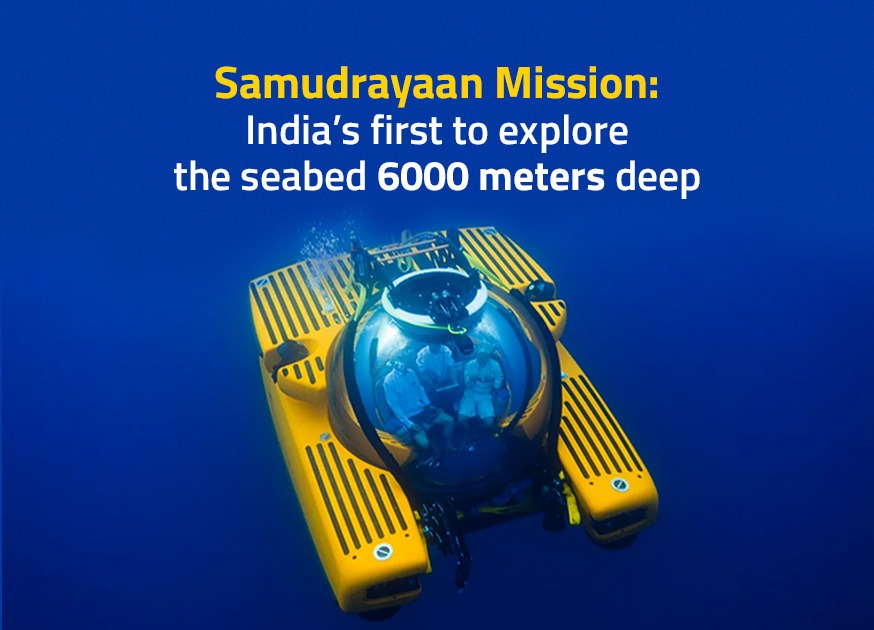
As it is said “The answers to all our questions are hidden in nature”. The saying fits perfectly in the context of renewable energies. Till now, India was working on dry lands to explore renewable energy resources. But now it is planning to widen its horizon with the inclusion of seabeds.
While other countries like Russia, Germany, France, and Japan are already part of the initiative, India is all set to join the group now. Not to forget, the program will focus on finding the metals required for harnessing renewable energies. Indeed, the project will have multiple advantages.
The News
With an aim to observe the unexplored deep sea area, the “Samudrayaan mission” will be conducted under the abled leadership of the National Institute of Technology. However, the Ministry of Health sciences will be the governing body for the project.
According to the decision taken by these two respective entities, 3 crew members will be sent on a submersible ship named “Matsya 6000” to explore a depth of at least 6000 meters. The submersible will be ready for operation by 2026.
The National Institute of Oceanography (Goa) will take care of the possible effects of the extraction process on the underwater environment.
What can we expect from the seabed?
According to the International Seabed Authority, the seabed is blessed with a large number of Polymetallic nodules, Cobalt rich manganese, and Polymetallic sulfides. However, ISA also warns about the fragility of the underwater environment and how rough and unmanned extraction can disturb oceanic biodiversity. ISA is assigned with the responsibility of making norms for underwater extraction during the whole project.
Rich underwater areas
According to the experts, the Clarion Crypton Zone is equipped with vast resources of Polymetallic nodules covering almost 6 million square kilometers of the seabed area. Polymetallic nodules are found in huge quantities in the Central Indian Ocean basin at depths of 5000 to 6000 meters.
The demand for essential metals to support expanding populations, urbanization, high-tech uses, and the growth of a green energy economy have all prompted the mining of polymetallic nodules.
Need for harnessing the underwater wealth
With the country’s mission to achieve zero carbon emissions by 2030, it is imperative to look for renewable energy sources continuously. Be it adopting the use of e-vehicles or inhibiting climate change through various innovative and sustainable methods, the requirement for renewable energy will increase with time.
According to automobile industry experts, an electric scooter battery requires lithium and manganese while an electric car needs 8 kilograms of lithium, 20 kilograms of manganese, 14 kilograms of cobalt, and 35 kilograms of Nickel. This is the dissection of just one vehicle. Imagine, how many kilograms of more metal will be required for making Electric Vehicles in a country with an ever-increasing population. In situations like these, seabed metal is nothing less than an opportunity for industries to fulfill the demand of a growing economy.
Conclusion
The “Samudrayaan Mission” is a hope for those who want to explore the depths of the Indian Ocean and increase the inflow of more energy resources. It can also help in understanding the role of the ocean in global climate change and developing newer and better technologies for resource extraction and ocean exploration. Additionally, the mission will also provide valuable data for oceanographers and marine biologists which will ultimately help in better management of marine resources.
However, there are opportunities to make sure that the government and businesses invest in the creation of green technology for extractive metallurgy and mining, as well as use adaptive management to continuously improve operations with the aim of environmental protection.
Interested in Environmental Courses? We have got you covered
Leave a Reply